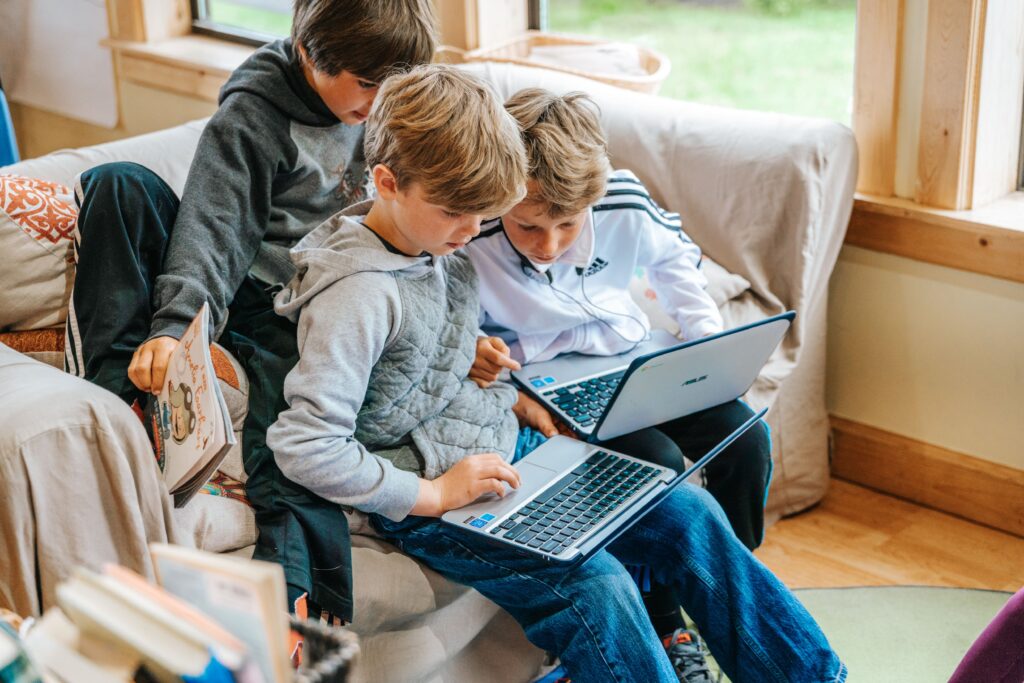As COVID-19 spreads across the United States, schools are closing their doors in an effort to slow the spread and protect students, educators and their families — some for days, weeks or perhaps even longer. Naturally, the question of “What happens now?” is top of mind for all. Just last week Teton Science Schools made the difficult decision to suspend all in-person programming until April 10.
This week, the reality of distance learning is settling in and already being implemented in many of our program areas. Colleagues are working together to find creative ways to support students, families and one another during this uncertain time. Most of us are doing our best to keep steady, adapt and stay healthy.
As we navigate this new reality, we thought we’d share our ideas for equipping educators, parents and students for distance learning. This week is focused on getting in the right mental space for this new learning modality.
Just Breathe
In an all staff video-conference Monday morning, Mountain Academy Head of School Michelle Heaton reminded educators to just breathe. Whether concerned about the new coronavirus, or about the idea of teaching from home (with kids of our own) for an indefinite period of time, it will be important to remain calm and frame what’s unfolding — for ourselves and our children — in clear terms.This article in the New York Times offers some valuable tips on how to talk to kids about coronavirus and why keeping our own anxiety in check is key.
Embody a Growth Mindset
A successful move to a new learning platform requires a growth mindset by teachers, students and parents alike. But it is fully expected that this type of transition will not be without its challenges. Collaborative learning and problem solving among educators, parents and students will be necessary as new methods and systems are tested in this novel territory.
Fit New Tools to Pedagogy
Place- and project-based teaching and learning are well-suited to the creativity and collaboration required for effective distance learning. It is understandable that distance learning cannot fully replicate in-person instruction and learning experiences, but educators can strive to practice place- and project-based pedagogy in a distance format as best they can with the tools available.
(We’ll be diving into this topic a bit more in the coming weeks.)
Parents as Partners
The need for adult supervision in this model of distance learning is significant. Parents and caregivers are stepping into new roles — many while navigating the additional challenge of working from home. Educators should approach their partnership with parents with patience and empathy.
Virtual information sessions, office-hours and parent-teacher conferences are all ways for educators and parents to work together as partners as they share the responsibility and accountability that comes with schooling.
Make the Learning Accessible
Resources like computers, books, equipment, supplies, face-time with teachers and a reliable internet connection are widely available to most students when they come to school each day. That’s not often the case when things move to distance learning platforms, especially in rural communities. Some ways educators can make learning more accessible during these times include:
-
-
- Giving students without reliable internet a call-in number for all online conference classes
- Allowing parents a window of time to pick up books, works-in-progress and other supplies that will be needed for at-home learning
- Printing worksheets or packets for students that won’t have reliable internet or at-home printing options and sending them home via pick-up or through the mail
-
Communicate, Communicate, Communicate
Opening the lines of communication between the teachers, parents and caregivers is a crucial component to helping students succeed. In the initial weeks, most will be figuring out the process together. Reaching out to teachers to answer questions and gain clarity when you don’t understand something is welcome and encouraged at all times, but especially during this time.
Create a “Dedicated Learning Space”
One of the great benefits of physically going to school is having the opportunity to mentally transition from home-mode to school-mode. In a distance learning scenario, that chance to mentally and physically transition becomes a bit more challenging. Even if it’s just a particular seat at the dinner table, creating a dedicated learning space can help. The point is that your child actually “goes to school” in a space that works for them and your family.
Set a Weekly Schedule
For students in a distance learning space, keeping a schedule is one of the hardest transitions because, in school buildings, time is set by the teacher. Helping your child set up a weekly schedule may be time-consuming up front, but after a week or two of helping, you can then empower your child to do it themselves. A weekly schedule should ideally be very detailed, down to the exact hour they will work and what they will achieve. Regardless of whether they’re in 1st grade or 12th grade, the key to success is helping your child(ren) not just block out time for each class but also set time aside to complete specific assignments and projects.
Have Fun
This is new territory for everybody and it’s important to keep a positive outlook, show ourselves and others kindness and grace and have a little fun, too. If you need to be creative with your or your student’s schedules, do it. If everyone needs a break, take one. Don’t forget to find joy in the small things during this challenging time – it will promote learning for everyone.


